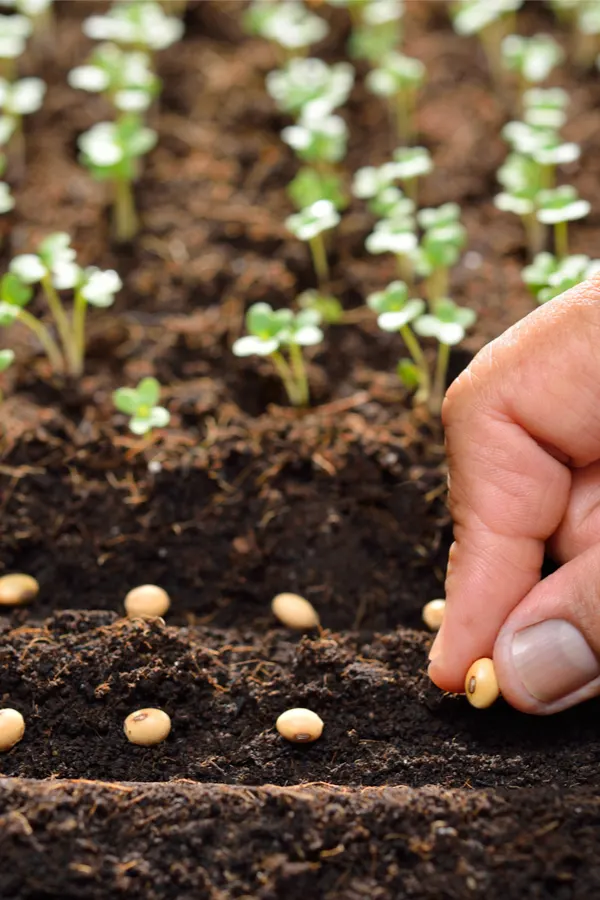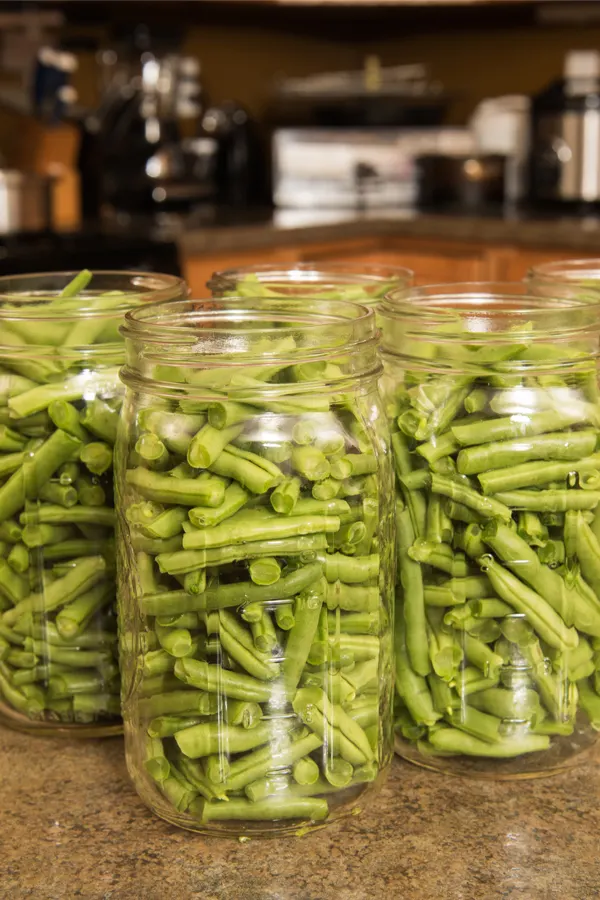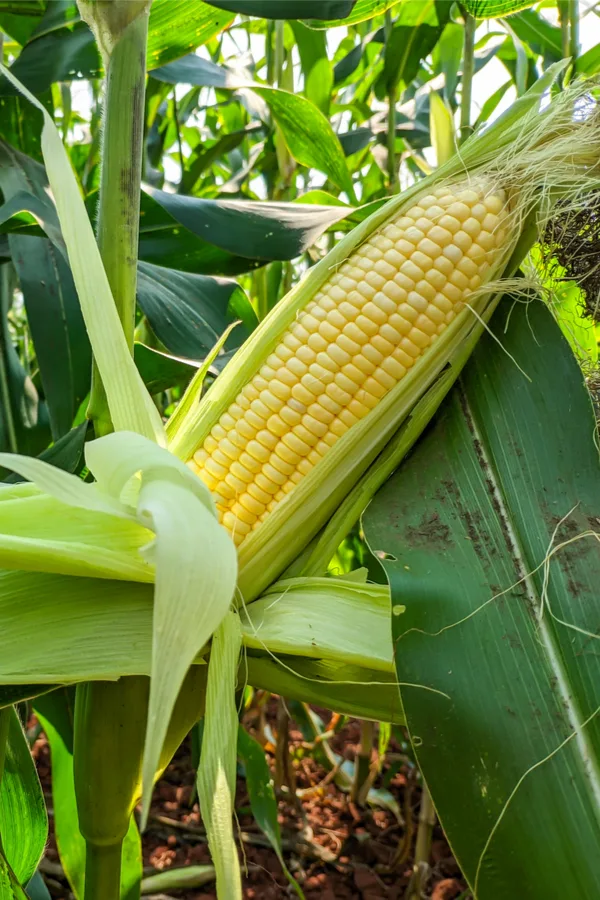When it comes to getting the most production possible out of your garden space this year, succession planting is the ultimate key to success.
Succession planting is the process of planting and replanting your garden throughout the growing season so that there is a constant and manageable supply of produce – from early spring right up until late fall.
The method is truly one of the best ways to get the most out of your available growing space. Not only does it help to keep fresh food at your fingertips all season, it can also help keep you from being overwhelmed by a crop all at once.

The Need For Succession Planting
Nearly every gardener has encountered the following scenario:
You plant a large row or rows of a specific vegetable in the spring, and then wait for the harvest. As the plants grow and the harvest nears, you fill with excitement. Especially as you taste the first vegetable to come from your crop!
But before you know, you suddenly are picking more produce than you can possibly ever eat. Because all fresh vegetables have a shelf life, you begin handing it out to friends and family at will. And then, just as suddenly as it began, the harvest ends.
You go from an overflowing bounty to zero in what seems and instant. Unfortunately, it means if you want it fresh for the rest of the summer, you’ll have to purchase that same vegetable that just a few weeks back, you had an overabundance of.
This all-at-once plight is a problem that happens to many a gardener. But luckily, you can solve it easily with a bit of simple succession planting!

How To Use Succession Planting In Your Garden
By practicing the art of succession planting, you can keep a more manageable harvest of your crop coming on. Even better, not just for a specific period, but for throughout most of the growing season.
Of course, if your plan is to can and preserve to stock up for the whole year around, then planting one big crop all at once makes sense. It allows for a big harvest over a short period of time, which is perfect for freezing and canning.
But even in those situations, it’s a great idea to have a few smaller plantings spread out a few weeks a part for fresh eating.
When it comes to succession planting, the best chance for success comes with seed crops. Crops such as lettuce, beans, peas, green onions, radishes, carrots, corn and other seed crops all have a short two to three-week “fresh” harvest time frame.
A great example of this is sweet corn. If you plant a single patch all at once, you will get a specific harvest for a two to three week period. But by planting a portion of your seeds every few weeks, they will mature at different times. And that means a more manageable crop of fresh corn at any given time – but for a longer period of time.
Listen in below to our Podcast on Succession Planting For More Great Info!
In addition to seed crops, the concept of succession planting can be used with some tomato varieties as well. Especially when they are determinate varieties that have a specific growing and harvest period.
For example, the Roma tomato, as a determinate variety, will bear nearly all of its fruit over a period of about three weeks. Most plant Roma tomatoes as a transplant in late spring for a mid-summer harvest. But by planting new transplants or even seeds in early summer, you can have a second crop come on in late fall.
This is also a great idea for other transplant/seed crops such as cucumbers or zucchini. By planting seeds or new transplants in early summer, you will have a strong crop come on in the fall as your first crop begins to fade.
There is one exception where there is little need for succession planting. Tomatoes and pepper plants that are indeterminate do not fall in the replant category. This is because they have all-season staying and production power, and can produce right up until the first frost.
With all of that in mind, here is a look at some of the best crops for succession planting, and how to best schedule their planting for success!
The Best Crops For Succession Planting
Salad Crops – Lettuce / Kale / Spinach / Radish
Salad crops are among the best for succession planting. Lettuce, kale, spinach, radishes, green onions and carrots are all perfect for staggered planting in the garden.

Leafy salad crops are great for their first few cuttings, then quickly begin to taste bitter. And with carrots, radishes and green onions, you can have an assortment of baby or mature veggies by staggering plantings.
For best results, sow a new area every two to three weeks to have an “always fresh” salad coming from your garden. Simply determine how much of each your family eats over the course of a three-week period, and plant accordingly.
We use raised beds for our salad crops, and plant the sections in thirds. By the time the third section is coming up, the first one has entirely finished and can be pulled and replanted. It is important to keep in mind that many greens will not do well in the middle of summer due to heat, so you may need to stop seeding for a period of time until the cool of fall settles in.
Green Beans
When it comes to green beans, a double planting works great to keep fresh beans around all summer. We plant our first crop in late spring, and then 45 days later, we plant a second crop.
After the first crop is done by mid-summer, the second crop is ready by the time late summer or early fall hits. You can have several pickings of a single green bean crop spread out over several weeks to a month.
With that in mind, usually two plantings per year will do the trick. If you will be freezing or canning, use the first picking of each planting to preserve. They are by far the most tender, and will preserve wonderfully.
Peas / Sugar Snap Peas
Much like green beans, peas (traditional or sugar snap) can be planted in early spring, and then again in mid to late summer.
Peas and sugar snap peas actually grow better in the cooler temps of early spring and early fall. So planting an early and late season crop is the perfect way to go! Like lettuce, they usually will bolt in mid-summer, so wait for the second planting to have a fall harvest.
Sweet Corn
Nothing can match the taste of fresh sweet corn, and succession planting is the perfect answer to keep corn always at its sweetest! Plant a new crop of sweet corn every 14 to 21 days after the first planting.
Figure out what your family eats over a two to three-week harvest period, and sow seeds accordingly. Remember with sweet corn, it is best to plant in blocks of rows to help with pollination.
Single rows will not pollinate as well, so you are much better to plant a block 4 to 6 stalks long, by 4 to 6 stocks wide. (See : How To Fertilize Sweet Corn In The Garden For Your Best Crop Ever!)
Try your hand at succession planting this year and keep that fresh food coming all summer! Happy Gardening! – Jim and Mary.
Jim and Mary Competti have been writing gardening, DIY and recipe articles and books for over 15 years from their 46 acre Ohio farm. The two are frequent speakers on all things gardening and love to travel in their spare time.
As always, feel free to email us at thefarm@owgarden.com with comments, questions, or to simply say hello! You can sign up for our free email list in the subscribe now box in the middle of this article. Follow us on Facebook here : OWG Facebook. This article may contain affiliate links.

